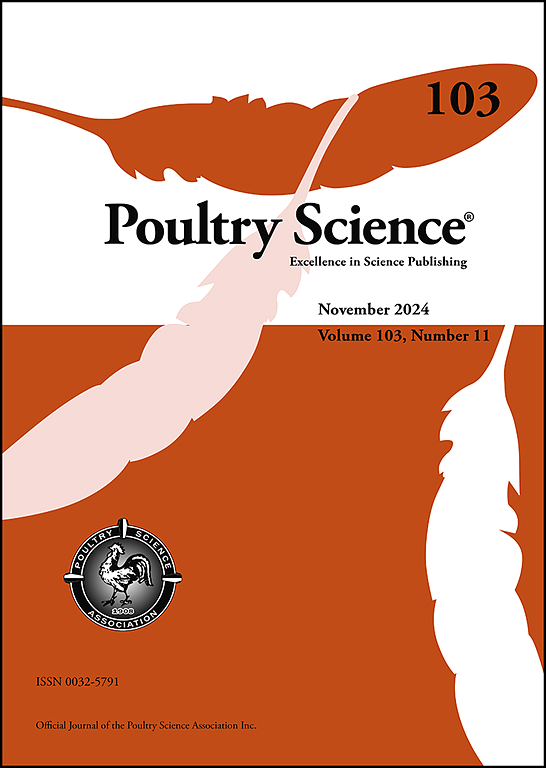Split-feeding as a sustainable feeding strategy for improving egg production and quality, nutrient digestibility, and environmental impact in laying hens
IF 3.8
1区 农林科学
Q1 AGRICULTURE, DAIRY & ANIMAL SCIENCE
引用次数: 0
Abstract
This study evaluated the effects of split feeding on production performance, egg quality, nutrient digestibility, odor emissions, and economic benefits in laying hens. A total of 468 Hy-Line Brown hens, aged 63 weeks, were divided into three dietary treatments over 13 weeks. The control group received a single basal diet, while two split-feeding groups (TRT1 and TRT2) received diets differing in nutrient composition between the morning and afternoon. TRT1 and TRT2 contained 10 % and 15 % less crude protein (CP), respectively, compared to CON. TRT1 maintained the same levels of metabolizable energy, standardized ileal digestibility amino acids, calcium, and phosphorus as CON, while TRT2 had 5 % lower metabolizable energy, standardized ileal digestibility amino acids, and calcium, and 15 % lower phosphate. Results showed that TRT1 reduced the incidence of downgraded eggs by 19.3 % in the later phase of the experiment (9–12 weeks) compared to CON (P = 0.025, 0.043, 0.022, 0.011). Both TRT1 and TRT2 reduced diet costs by 6 % and 15 %, respectively. Additionally, split feeding improved nutrient digestibility, reduced harmful gas emissions, and resulted in a 4.5 % feed cost savings per kilogram of salable egg production compared to CON. These findings suggest that split feeding (TRT1) could enhance egg quality, reduce environmental impact, and contribute to the sustainability of poultry farming
求助全文
约1分钟内获得全文
求助全文
来源期刊

Poultry Science
农林科学-奶制品与动物科学
CiteScore
7.60
自引率
15.90%
发文量
0
审稿时长
94 days
期刊介绍:
First self-published in 1921, Poultry Science is an internationally renowned monthly journal, known as the authoritative source for a broad range of poultry information and high-caliber research. The journal plays a pivotal role in the dissemination of preeminent poultry-related knowledge across all disciplines. As of January 2020, Poultry Science will become an Open Access journal with no subscription charges, meaning authors who publish here can make their research immediately, permanently, and freely accessible worldwide while retaining copyright to their work. Papers submitted for publication after October 1, 2019 will be published as Open Access papers.
An international journal, Poultry Science publishes original papers, research notes, symposium papers, and reviews of basic science as applied to poultry. This authoritative source of poultry information is consistently ranked by ISI Impact Factor as one of the top 10 agriculture, dairy and animal science journals to deliver high-caliber research. Currently it is the highest-ranked (by Impact Factor and Eigenfactor) journal dedicated to publishing poultry research. Subject areas include breeding, genetics, education, production, management, environment, health, behavior, welfare, immunology, molecular biology, metabolism, nutrition, physiology, reproduction, processing, and products.
 求助内容:
求助内容: 应助结果提醒方式:
应助结果提醒方式:


